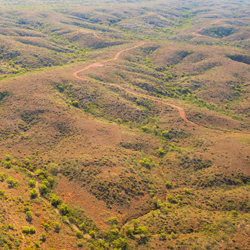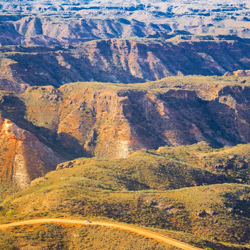Science Highlight
The dominant role of semi-arid ecosystems in the trend and variability of the land CO2 sink
Anders Ahlström, Michael R. Raupach, Guy Schurgers, Benjamin Smith, Almut Arneth, Martin Jung, Markus Reichstein, Josep G. Canadell, Pierre Friedlingstein, Atul K. Jain, Etsushi Kato, Benjamin Poulter, Stephen Sitch, Benjamin D. Stocker, Nicolas Viovy, Ying Ping Wang, Andy Wiltshire, Sönke Zaehle, Ning Zeng
Science, published: 22 May 2015
DOI: 10.1126/science.aaa1668
Paper Abstract
The growth rate of atmospheric carbon dioxide (CO2) concentrations since industrialization is characterized by large interannual variability, mostly resulting from variability in CO2 uptake by terrestrial ecosystems. However, the contributions of regional ecosystems to that variability are not well known. Using an ensemble of ecosystem and land-surface models and an empirical observation-based product of global gross primary production, we show that the mean sink, trend, and interannual variability in CO2 uptake by terrestrial ecosystems are dominated by distinct biogeographic regions.Whereas the sink strength is dominated by highly productive lands (mainly tropical forests), the trend and interannual variability of the sink are dominated by semi-arid ecosystems whose carbon balance is strongly associated with circulation-driven variations in both precipitation and temperature.
Manuscript
- Download paper: http://www.sciencemag.org/content/348/6237/895.abstract
- Contact lead author: Anders Ahlström
Press Releases
Media
| Illustrative Photos (available free if credited as specified) | ||
|---|---|---|
 |
 |
Semi-arid region of Western Australia. |
Semi-arid region of Western Australia. |
 |
 |
Semi-arid region of Western Australia. |
Semi-arid region of Central Australia. |
|
